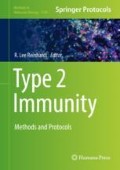Abstract
Natural killer T (NKT) cells are a subset of αβ T cells that recognize lipid antigens presented by the nonclassical MHC molecule CD1d. Although numerically small, these cells have been shown to play an important role in the regulation of multiple immune responses, including microbial infection, autoimmunity, and cancer. Even in the steady state, cytokine production by NKT cells influences the basal status and function of other immune cells, including dendritic cells and CD8 T cells. To fully understand their biology and harness them in the clinic, it is imperative to dissect the molecular mechanisms involved in the acquisition of their functionality. Unlike conventional αβ T cells, NKT cells acquire their effector function during development in the thymus. At this time, precursors commit to one of three functionally different effector lineages: NKT1, NKT2, and NKT17. These subsets are characterized by the secretion of different cytokines upon antigenic stimulation and by the expression of the master transcription factors Tbet, promyelocytic leukemia zinc finger (PLZF), and retinoic orphan receptor γ t (RORγt). Here we describe a multicolor flow cytometry protocol to identify NKT cell subsets and interrogate the progression of NKT precursors through their development in the thymus.
Access this chapter
Tax calculation will be finalised at checkout
Purchases are for personal use only
References
Bendall SC, Nolan GP, Roederer M, Chattopadhyay PK (2012) A deep profiler’s guide to cytometry. Trends Immunol 33(7):323–332. https://doi.org/10.1016/j.it.2012.02.010
Altman JD, Davis MM (2001) MHC-peptide tetramers to visualize antigen-specific T cells. Curr Prot Immunol. doi:https://doi.org/10.1002/cpim.14
Altman JD, Moss PA, Goulder PJ, Barouch DH, McHeyzer-Williams MG, Bell JI, McMichael AJ, Davis MM (1996) Phenotypic analysis of antigen-specific T lymphocytes. Science 274(5284):94–96
Benlagha K, Weiss A, Beavis A, Teyton L, Bendelac A (2000) In vivo identification of glycolipid antigen-specific T cells using fluorescent CD1d tetramers. J Exp Med 191(11):1895–1903
Matsuda JL, Naidenko OV, Gapin L, Nakayama T, Taniguchi M, Wang CR, Koezuka Y, Kronenberg M (2000) Tracking the response of natural killer T cells to a glycolipid antigen using CD1d tetramers. J Exp Med 192(5):741–754
Schulz KR, Danna EA, Krutzik PO, Nolan GP (2012) Single-cell phospho-protein analysis by flow cytometry. Curr Prot Immunol Chapter 8:Unit 8.17.11-20. doi:https://doi.org/10.1002/0471142735.im0817s96
Bendelac A, Savage PB, Teyton L (2007) The biology of NKT cells. Annu Rev Immunol 25:297–336. https://doi.org/10.1146/annurev.immunol.25.022106.141711
Gapin L, Matsuda JL, Surh CD, Kronenberg M (2001) NKT cells derive from double-positive thymocytes that are positively selected by CD1d. Nat Immunol 2(10):971–978. https://doi.org/10.1038/ni710
Wei DG, Lee H, Park SH, Beaudoin L, Teyton L, Lehuen A, Bendelac A (2005) Expansion and long-range differentiation of the NKT cell lineage in mice expressing CD1d exclusively on cortical thymocytes. J Exp Med 202(2):239–248. https://doi.org/10.1084/jem.20050413
Griewank K, Borowski C, Rietdijk S, Wang N, Julien A, Wei DG, Mamchak AA, Terhorst C, Bendelac A (2007) Homotypic interactions mediated by Slamf1 and Slamf6 receptors control NKT cell lineage development. Immunity 27(5):751–762. https://doi.org/10.1016/j.immuni.2007.08.020
Benlagha K, Wei DG, Veiga J, Teyton L, Bendelac A (2005) Characterization of the early stages of thymic NKT cell development. J Exp Med 202(4):485–492. https://doi.org/10.1084/jem.20050456
Dasgupta S, Kumar V (2016) Type II NKT cells: a distinct CD1d-restricted immune regulatory NKT cell subset. Immunogenetics 68(8):665–676. https://doi.org/10.1007/s00251-016-0930-1
Seiler MP, Mathew R, Liszewski MK, Spooner CJ, Barr K, Meng F, Singh H, Bendelac A (2012) Elevated and sustained expression of the transcription factors Egr1 and Egr2 controls NKT lineage differentiation in response to TCR signaling. Nat Immunol 13(3):264–271. https://doi.org/10.1038/ni.2230
Benlagha K, Kyin T, Beavis A, Teyton L, Bendelac A (2002) A thymic precursor to the NK T cell lineage. Science 296(5567):553–555
Savage AK, Constantinides MG, Han J, Picard D, Martin E, Li B, Lantz O, Bendelac A (2008) The transcription factor PLZF directs the effector program of the NKT cell lineage. Immunity 29(3):391–403. https://doi.org/10.1016/j.immuni.2008.07.011
Kovalovsky D, Uche OU, Eladad S, Hobbs RM, Yi W, Alonzo E, Chua K, Eidson M, Kim HJ, Im JS, Pandolfi PP, Sant'Angelo DB (2008) The BTB-zinc finger transcriptional regulator PLZF controls the development of invariant natural killer T cell effector functions. Nat Immunol 9(9):1055–1064. https://doi.org/10.1038/ni.1641
Lee YJ, Holzapfel KL, Zhu J, Jameson SC, Hogquist KA (2013) Steady-state production of IL-4 modulates immunity in mouse strains and is determined by lineage diversity of iNKT cells. Nat Immunol 14(11):1146–1154. https://doi.org/10.1038/ni.2731
Lee YJ, Wang H, Starrett GJ, Phuong V, Jameson SC, Hogquist KA (2015) Tissue-specific distribution of iNKT cells impacts their cytokine response. Immunity 43(3):566–578. https://doi.org/10.1016/j.immuni.2015.06.025
Townsend MJ, Weinmann AS, Matsuda JL, Salomon R, Farnham PJ, Biron CA, Gapin L, Glimcher LH (2004) T-bet regulates the terminal maturation and homeostasis of NK and Valpha14i NKT cells. Immunity 20(4):477–494
Givan AL (2011) Flow cytometry: an introduction. Methods Mol Biol 699:1–29. https://doi.org/10.1007/978-1-61737-950-5_1
Baumgarth N, Roederer M (2000) A practical approach to multicolor flow cytometry for immunophenotyping. J Immunol Methods 243(1–2):77–97
Carlyle JR, Mesci A, Ljutic B, Belanger S, Tai LH, Rousselle E, Troke AD, Proteau MF, Makrigiannis AP (2006) Molecular and genetic basis for strain-dependent NK1.1 alloreactivity of mouse NK cells. J Immunol 176(12):7511–7524
Perfetto SP, Chattopadhyay PK, Roederer M (2004) Seventeen-colour flow cytometry: unravelling the immune system. Nat Rev Immunol 4(8):648–655. https://doi.org/10.1038/nri1416
Dutta M, Kraus ZJ, Gomez-Rodriguez J, Hwang SH, Cannons JL, Cheng J, Lee SY, Wiest DL, Wakeland EK, Schwartzberg PL (2013) A role for Ly108 in the induction of promyelocytic zinc finger transcription factor in developing thymocytes. J Immunol 190(5):2121–2128. https://doi.org/10.4049/jimmunol.1202145
Author information
Authors and Affiliations
Corresponding author
Editor information
Editors and Affiliations
Rights and permissions
Copyright information
© 2018 Springer Science+Business Media, LLC, part of Springer Nature
About this protocol
Cite this protocol
Tuttle, K.D., Gapin, L. (2018). Characterization of Thymic Development of Natural Killer T Cell Subsets by Multiparameter Flow Cytometry. In: Reinhardt, R. (eds) Type 2 Immunity. Methods in Molecular Biology, vol 1799. Humana, New York, NY. https://doi.org/10.1007/978-1-4939-7896-0_11
Download citation
DOI: https://doi.org/10.1007/978-1-4939-7896-0_11
Published:
Publisher Name: Humana, New York, NY
Print ISBN: 978-1-4939-7895-3
Online ISBN: 978-1-4939-7896-0
eBook Packages: Springer Protocols

